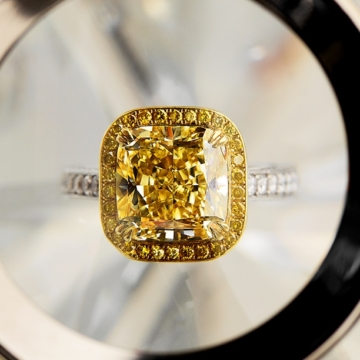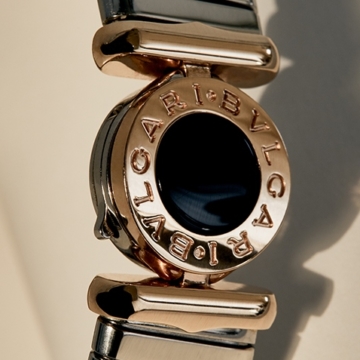

Everything to Know About Lab-Grown Diamonds
You may have the eye and wit to sniff out a real diamond from a cubic zirconia look-alike, but what about a lab-grown diamond from a natural diamond? Unless you have a full-size laboratory and a team of pros in your backyard, it’s pretty much impossible.
Normally something considered synthetic or alternative has a negative connotation. Hence the importance of fashion verification teams and why high value is (understandably) placed on the real deal when it comes to luxury goods. Fortunately, lab-grown diamonds have a completely different narrative. They may not possess the same origin story as their brethren who exploded from volcanoes and emerged after millions of years of pressure, but they’re just as authentic.
Lab-grown diamonds are a ground-breaking innovation in the world of jewelry, for both creators and consumers alike. Diamonds were once a luxury investment with sky-high prices, particularly if you wanted anything that wasn’t remarkably tiny. While this is still very much the case, lab-grown variations have stepped in to make jewelry more sustainable and accessible and provide shoppers with another option. If you’ve been intrigued by lab-grown versions and are interested in how they’re made, let’s dig in.
Everything You Should Know About Lab-Grown Diamonds
Curious about the lab-grown trend? Here are answers to all the questions you may have about these ethical diamonds.
What Are Lab-Grown Diamonds?
A lab-grown diamond is a diamond that is made synthetically in a laboratory setting. It’s a gem that hasn’t been mined or found naturally. That being said, it’s still a diamond.
When you hear the words “synthetic diamond” you might think that these gems are fake or a faux version. Understandably, in other areas of accessories and fashion, like faux leather or faux fur, the material is made of something completely different and is in no way chemically similar to the item it’s imitating. Lab-grown diamonds are different. Their chemical composition means they’re just as real as their natural counterparts.
How Are Lab-Grown Diamonds Made?
The creation of a lab-grown diamond is an involved process and is either made in one of two ways: through high pressure/high temperature (HPHT) or through chemical vapor deposition (CVD). They’re complex processes, but here’s a quick breakdown so you can sling this knowledge around to friends — consider it your new party trick.
HPHT uses an intense machine that exposes materials to extreme levels of heat and pressure. Aside from making these earth-bound treasures appear in a lab in a few weeks rather than millions of years, it’s a handy tool for tweaking the color of subpar jewels or intentionally changing their hue to something more saturated.
CVD gives the growing diamond a little less intense pressure — literally and figuratively. Temperatures are cooler (relatively speaking, they’re still hotter than your oven) and the units of pressure used are lower. The addition of carbon gas is what helps move things along when the conditions are slightly less heated.
This very much differs from the way in which mined diamonds are created in nature. And, this is really the only major area where these two types vary. Ready for a science lesson? A natural diamond, as the Smithsonian’s diamond expert explains, results from immense pressure and heat compressing carbon atoms.
Diamonds actually take shape deep inside the earth and we’ve only managed to find them thanks to volcanic eruptions that have brought some up to a more accessible level — lucky us. There are multiple mining techniques used to find them, but this method is often criticized for not being environmentally friendly or ethical.
Lab-Grown vs. Natural Diamonds
When picking out diamonds, most people are very familiar with the four Cs: cut, clarity, carat, and color. What other diamond alternatives in the past struggled with was meeting each of these criteria and getting high scores in each category. While it’s a scale, other materials often can’t compete when it comes to clarity and color or even how light is reflected and scattered.
Luckily, that’s not an issue with lab-grown diamonds. They’re chemically and optically the same. Still, there are a couple of differences between the two. The first and most obvious is their origins, as mentioned earlier. One comes from the earth and the other is made in a lab. According to the Gemological Institute of America, diamonds made in a laboratory also won’t have additional chemicals or flecks of other elements in their composition, which can sometimes be found trapped in a natural diamond.
A fun difference? Lab-grown gems tend to have more phosphorescence, meaning they’ll glow blue when exposed to short-ray UV radiation. All in all, these differences are pretty minor, and it takes a professional with well-rounded knowledge and the right tools to truly discern the two.
Outside of physical and chemical differences, shoppers will find that lab-grown diamonds tend to be cheaper in price, and in many instances, a larger carat or clearer lab-grown diamond will be less expensive than the same caliber of natural diamond.
Are Lab-Grown Diamonds Right for You?
A lab-grown diamond makes a good case for itself. It’s chemically the same as a natural diamond, often more affordable at an equitable quality, and has a lesser impact on the environment. If sustainability, ethical practices, and price per carat are important to you, a human-made gem is likely the perfect choice. If price is of no concern and you, or the person you’re buying it for strongly prefers a natural, mined diamond, then you may choose to forgo the lab-grown route and opt for the classically extracted version.




